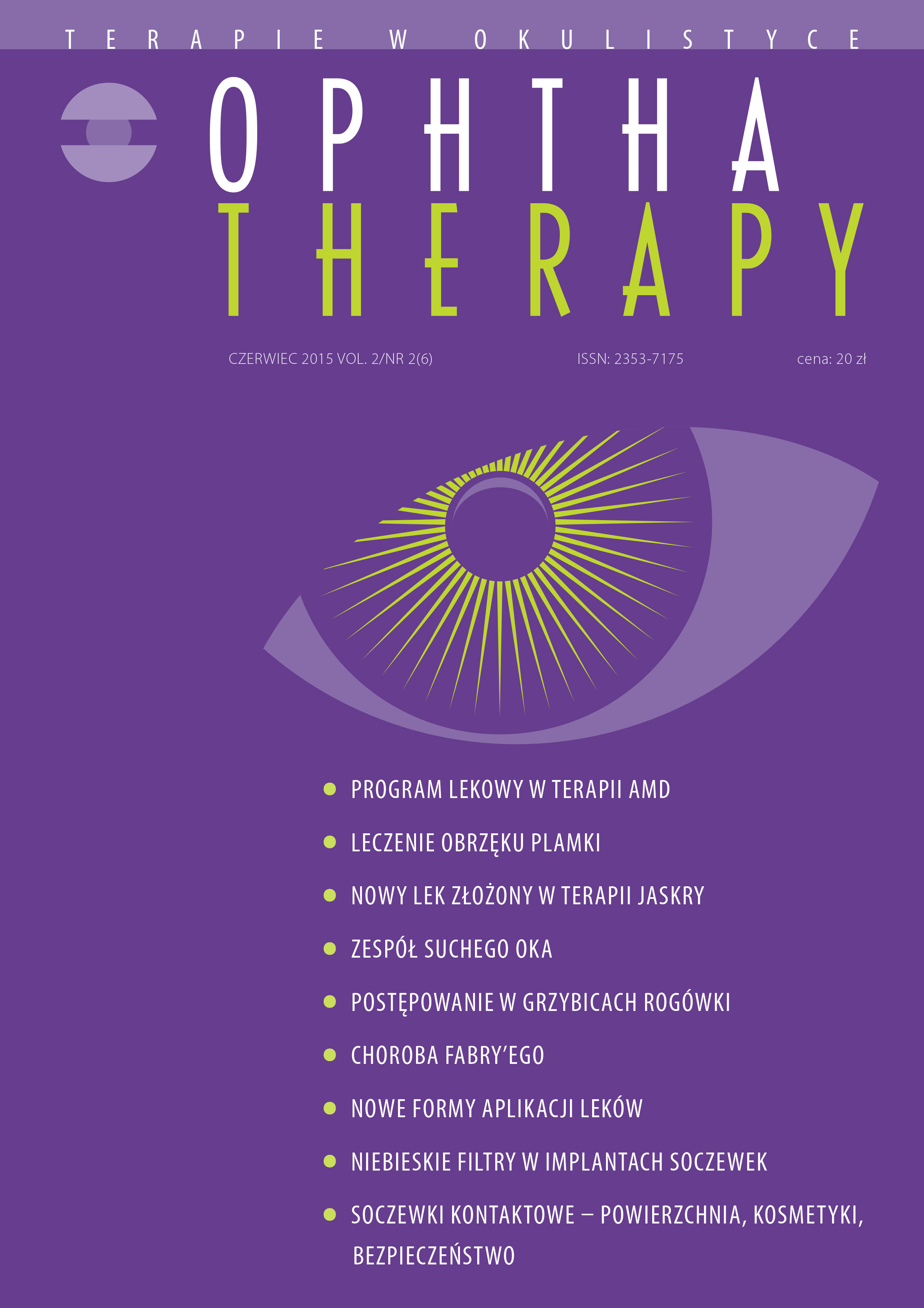Optimization of dosage forms to achieve effective pharmacotherapy
Main Article Content
Abstract
The aim of the development of ocular delivery systems is to improve the therapeutic efficacy and to facilitate the drug administration by the patient. The current research studies in the area of the ophthalmic preparations primarily focus on the development of the dispersed systems, i.e., micro- and nanoparticles, liposomes, submicron emulsions, microemulsions as well as the solid dosage forms such as implants, inserts and minitablets. The possibilities provided by the pharmaceutical technology in the area of the dosage forms development are presented on the example of the cyclosporin A.
Downloads
Article Details

This work is licensed under a Creative Commons Attribution-NonCommercial-NoDerivatives 4.0 International License.
Copyright: © Medical Education sp. z o.o. License allowing third parties to copy and redistribute the material in any medium or format and to remix, transform, and build upon the material, provided the original work is properly cited and states its license.
Address reprint requests to: Medical Education, Marcin Kuźma (marcin.kuzma@mededu.pl)
References
2. Jachowicz R. Postać leku. Optymalizacja leków doustnych i do oczu w nowoczesnej technologii farmaceutycznej. Wydawnictwo Lekarskie PZWL, Warszawa 2013; 362-426.
3. Souza JG, Dias K, Pereira TA et al. Topical delivery of ocular therapeutics: carrier systems and physical methods. J Pharm Pharmacol. 2013; 66: 507-30.
4. Di Tommaso C, Behar-Cohen F, Gurny R et al. Colloidal systems for the delivery of cyclosporin A to the anterior segment of the eye. Ann Pharm Fr. 2011; 69: 116-23.
5. Lallemand F, Felt-Baeyens O, Besseghir K et al. Cyclosporine A delivery to the eye: a pharmaceutical challenge. Eur J Pharm Biopharm. 2003; 56: 307-18.
6. Yavuz B, Pehlivan SB, Ünlü N. An overview on dry eye treatment: approaches for cyclosporin A delivery. ScientificWorldJournal. 2012; 194848.
7. Allergan I, 2010. Restasis (Cyclosporine a Ophthalmic Emulsion) 0.05%. Online: http://www.allergan.com/assets/pdf/restasis_pi.pdf.
8. Kurkov SV, Loftsson T. Cyclodextrins. Int J Pharm. 2013; 457: 167-80.
9. Alghadyan AA, Peyman GA, Khoobehi BK. Liposome-bound cyclosporine: aqueous and vitreous level after subconjunctival injection. Int. Ophtalmol. 1988; 12: 101-4.
10. Jachowicz R, Czech A, Jamróz W. Mikro- i nanocząstki w terapii okulistycznej. Farm Pol. 2009; 65: 285-90.
11. Calvo P, Sanchez A, Martinez J et al. Polyester nanocapsules as new topical ocular delivery systems for cyclosporin A. Pharm Res. 1996; 13: 311-5.
12. de Campos AM, Sanchez A, Alonso MJ. Chitosan nanoparticles: a new vehicle for the improvement of the delivery of drugs to the ocular surface. Application to cyclosporin A. Int J Pharm. 2001; 224: 159-68.
13. Xie L, Shi W, Wang Z,et al. Prolongation of corneal allograft survival using cyclosporine in a polylactide-co glicolide polymer. Cornea. 2001; 20: 748-52.
14. Abdelkader H, Pierscionek B, Alany RG. Novel in situ gelling ocular films for the opioid growth factor-receptor antagonistnaltrexone hydrochloride: fabrication, mechanical properties, mucoadhesion, tolerability and stability studies. Int J Pharm. 2014; 477: 631-42.

